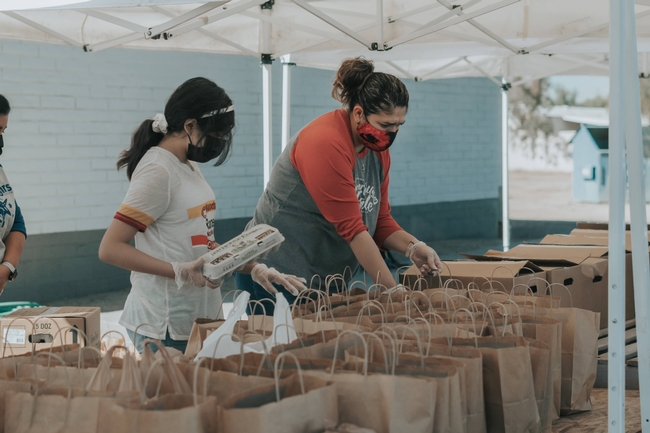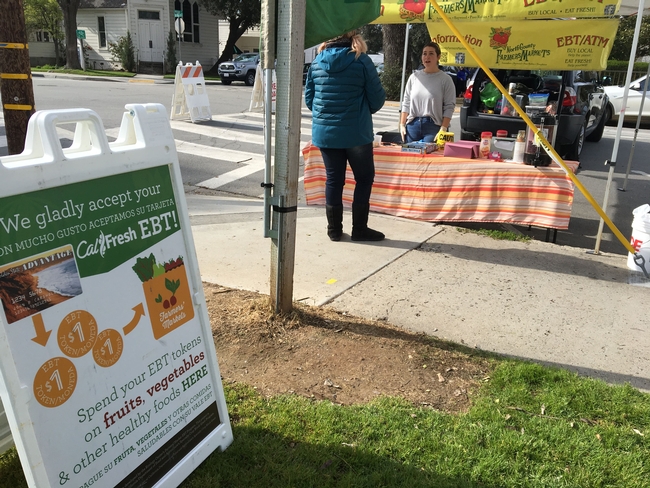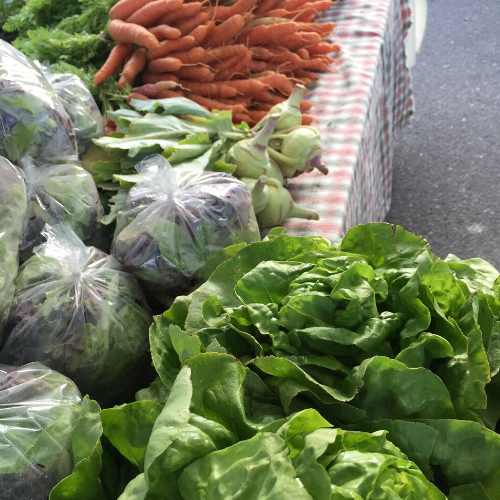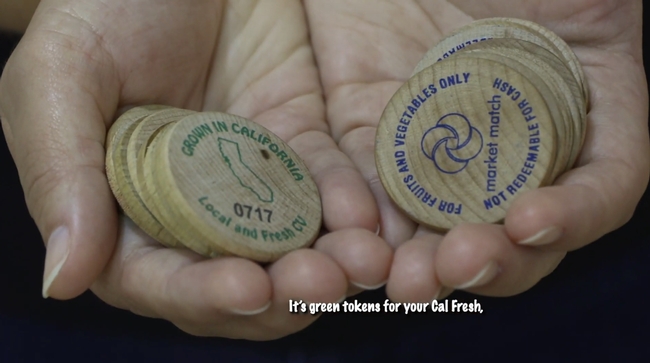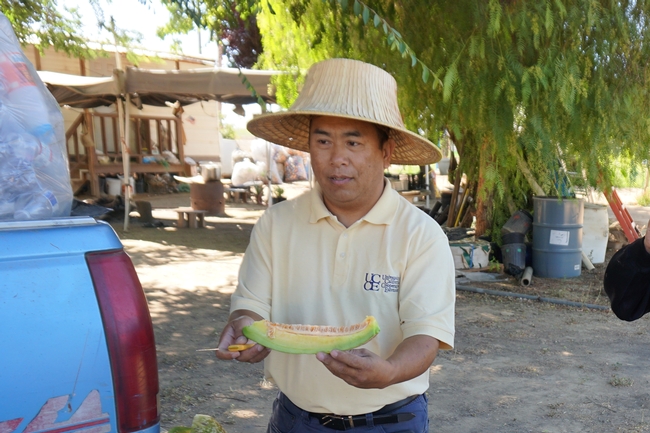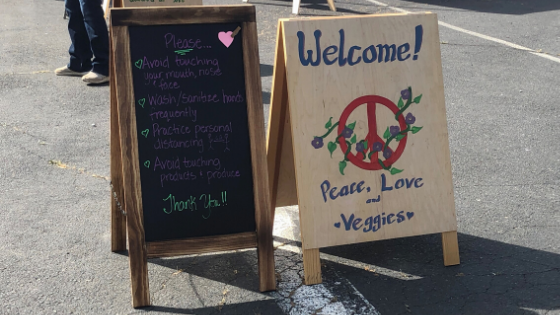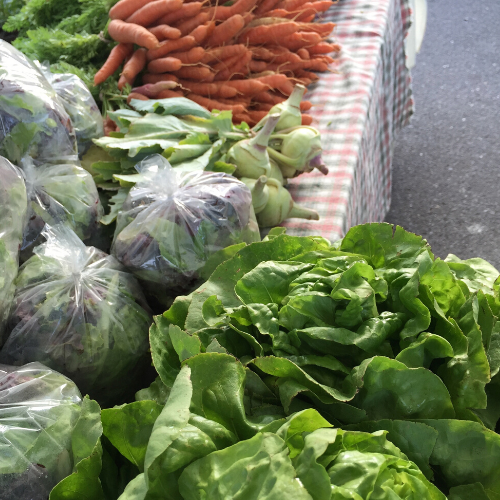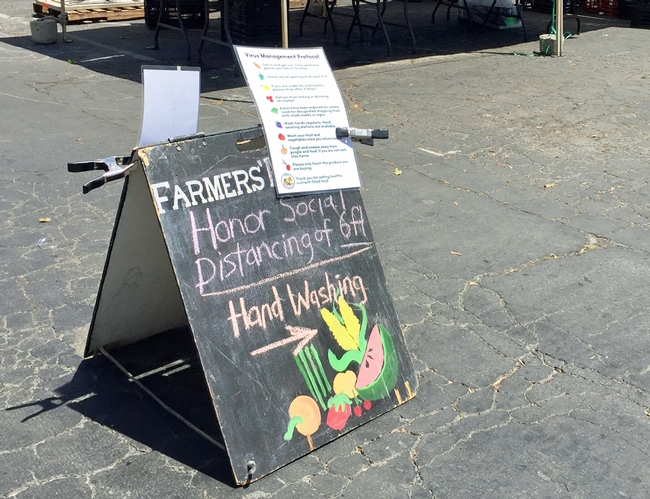Posts Tagged: farmers
UC ANR experts offer counsel as CalFresh benefits shrink, participants face hunger
Reduction of SNAP benefit deepens crisis of inflation, high cost of living, low wages
Starting this month, many of the estimated 3 million people in the CalFresh program – California's version of SNAP (Supplemental Nutrition Assistance Program) – will be facing hunger and making difficult decisions to meet their most basic needs. In late March, participants received the last of the pandemic-related emergency aid that significantly boosted their monthly benefits. The reduction varies by household size and income; for example, in April a single-person household could see a drop from $281 per month to $23.
“The emergency food allotments had a tremendous impact in our communities and across the nation,” said Shannon Klisch, academic coordinator for the Youth, Families and Communities Program for UC Cooperative Extension in San Luis Obispo and Santa Barbara counties. “One study estimated that these allotments kept more than 4 million people out of poverty across the U.S. in the last quarter of 2021, and reduced child poverty by 14%.”
SNAP increases during the pandemic made many Californians more food-secure, with some participants reporting that their allotments finally had been enough to feed their families for the month, according to Wendi Gosliner, a project scientist at the Nutrition Policy Institute (a program of UC Agriculture and Natural Resources). But, with the benefit reductions, food insecurity is emerging again as a serious concern.
“It is inconceivable that a nation this wealthy should have so many people experiencing hunger,” Gosliner said. “And here in California, with the high cost of living, ongoing inflation and extreme income and wealth disparities, people are being forced to explore every possible avenue just to feed themselves and their families.”
To help ensure they are receiving the maximum allotment, Klisch recommends that CalFresh participants – especially those who applied during the pandemic and are relatively new to the program – double-check their information.
“If the county doesn't have your most up-to-date information, call your county worker if you've changed your address, if you've experienced decreased income, if your housing costs have gone up, or if you have new expenses – like child or dependent care expenses or medical expenses – these can help you qualify for more CalFresh funds,” she explained.
For families with school-aged children, Klisch said they can stretch their food dollars and promote healthy eating by encouraging their children to eat breakfast and lunch at school through California's universal free school meals, and all families with children under 18 can watch for the next issuance of the P-EBT (Pandemic EBT) card, worth potentially hundreds of dollars.
In addition to these options for food assistance, Klisch pointed to programs that can help people save money on other household expenses, such as California Alternate Rates for Energy Programs (CARE) and Affordable Connectivity Program. Local food banks are also gearing up across the state to handle an expected surge in clients in need of emergency food; a list of California food banks can be found at cafoodbanks.org/our-members.
“We ask a lot of low-income families and workers to navigate and piece together various programs, applications, and benefits when we don't commit to a strong safety net,” Klisch said. “On the other hand, when people have enough money for food, everyone benefits through decreased health care costs and increased economic activity.”
Gosliner also said that people should look into their eligibility for WIC (Special Supplemental Nutrition Program for Women, Infants and Children), as well as the federal Earned Income Tax Credit (EITC) and CalEITC, poverty-alleviation benefits underused by Californians.
“People should make sure they are accessing all the safety net benefits for which they are eligible,” Gosliner said.
Market Match, other nutrition incentive programs can help
Through programs like Market Match, available at about 300 farmers markets across California affiliated with the Ecology Center, CalFresh participants can have their EBT benefits “matched” by their local market (usually up to $10 or $15 per visit).
“People are looking to get creative about how to stretch their food dollars, and Market Match is one way to do that,” said Klisch, who has led UCCE efforts to help promote the program along the Central Coast since 2017.
Striving to expand access to fresh fruit and vegetables and to support local farms, UCCE and CalFresh Healthy Living, UC worked with partners to increase CalFresh redemption at farmers markets in San Luis Obispo and northern Santa Barbara counties.
In 2017, about $48,000 in CalFresh and Market Match benefits were redeemed at farmers markets in the area. In 2022, the total was more than $207,000 – a 327% increase. According to Ecology Center figures for the entire state, CalFresh and Market Match spending at farmers markets jumped 161% from 2019 to 2021, up to $13 million.
Gosliner, whose research has shown that these nutrition incentive programs are associated with increased food security, noted that “the people who use Market Match absolutely love the program and feel it is incredibly helpful.” She also added that the California Department of Social Services is developing a pilot program that would offer match incentives for purchasing fruits and vegetables at larger food retailers.
Although the biggest of its kind, Market Match is just one of the programs across California that provide “matches” for healthy food purchases under the California Nutrition Incentive Program, which in turn is primarily funded by GusNIP (the nationwide Gus Schumacher Nutrition Incentive Program).
GusNIP dollars – and SNAP overall – are governed by the federal Farm Bill, typically renewed every five years and currently being negotiated by Congress.
Farm Smart program instills appreciation for ag in Imperial Valley youth
Desert REC program has reached more than 168,000 people thanks to broad community support
“Oohs” and “aahs” fill the classroom as Stacey Amparano, Farm Smart program manager at the Desert Research and Extension Center in Holtville, yanks an ear of corn off a stalk. Holding it high in the air, she begins shucking the corn to reveal a bright yellow color.
“It's corn!” yells a member of the audience. Amparano demonstrates how to shuck and shell corn to a group of local kindergarteners, all while explaining its many uses.
Farm Smart, an outreach program focused on agricultural literacy, has educated more than 168,000 people in the Imperial Valley and surrounding areas since its inception in 2001. The program is an integral part of Desert REC – one of nine centers operated across the state by University of California Agriculture and Natural Resources – and serves K-12 students and their families.
Nestled in the southeastern corner of the state, Imperial Valley is home to over 500,000 acres of farmable land and more than 65 crops, making it an ideal place to teach youth about the valley's significant contribution to California, the U.S., and the world.
“Farm Smart is a reminder to kids that they come from a place that feeds most of the country throughout the year. It's something to be proud of,” said Amparano.
While the younger participants might not grasp the full impact of Farm Smart right away, the community sure does. More than 60% of the program's funding comes from contributions from the community, including local organizations, institutions and families.
“I don't think many people realize that a majority of Farm Smart is funded by the community. It makes this program even more special, that our own community believes in our impact and wants us to keep going,” Amparano said.
For example, the Imperial Irrigation District has supported and funded the program since it began, donating $107,500 in 2022 alone.
“This program has created an awareness of how food is grown, harvested and put on our table,” said Norma Galindo, former IID board director. “It invites participation from the elementary through high school grades and serves as a hands-on experience that is priceless.”
During her tenure, Galindo championed the increase of IID's monetary allocation to Farm Smart and requested that older people be allowed to participate in the same manner as the students. This created an opportunity for Farm Smart to engage a segment of the population that is often overlooked. Like the youngsters, retirees escaping cold weather in northern states can learn about irrigation and soils and pick vegetables to take home.
Valeria Landeros, a community education specialist at Desert REC, grew up in the Imperial Valley and remembers attending a Farm Smart field trip in elementary school. “I remember learning how to milk a cow and make butter and thinking that we traveled somewhere far out of town,” she said.
“Most people who grow up in Imperial Valley and the greater area know nothing about the fields that surround us,” said Clarissa Abarca, another community education specialist at Desert REC.
Similar to Landeros, Abarca participated in Farm Smart field trips during elementary to high school and can attest to the program's ability to modify its content and suit the interest of all ages. As an educator, Abarca gets most excited about instilling an appreciation for agriculture and introducing students to the numerous careers in the sector.
Galindo said that she expects that the IID Board will continue to support this program with crucial funds.
“Any other [county] that emulates this type of program stands to benefit from it, if and when it is done on a long-term and consistent basis. Teaching the city folks about farming is a process, not
an event,” said Galindo.
Farm Smart was selected as a recipient of the California State Future Farmers of America Distinguished Service Award and will be recognized at the upcoming State FFA Conference in March.
To learn more about Farm Smart visit https://drec.ucanr.edu/Farm_Smart/.
UCCE is helping CalFresh shoppers double food dollars at farmers markets
Across California, CalFresh shoppers can use their EBT cards at most farmers markets and double the value of their benefit, up to $10 per family each market day.
“This benefit is underused,” said Chutima Ganthavorn, nutrition, family and consumer sciences advisor in Riverside and San Bernardino counties. “There may be a perception that farmers market prices are higher than in regular grocery stores.”
To help promote the Market Match program that makes shopping at farmers markets more affordable for CalFresh customers, Ganthavorn worked with the UC Agriculture and Natural Resources news and information outreach in Spanish office to develop videos in English and Spanish that clearly explain the program for potential users.
“Our program, CalFresh Healthy Living, UCCE, provides nutrition education to CalFresh-eligible participants in Coachella Valley to promote increasing consumption of locally grown, fresh fruits and vegetables,” Ganthavorn said. “Increasing buying power at farmers markets helps participants incorporate delicious, local produce into affordable meals for the whole family.”
To use Market Match, CalFresh recipients visit a kiosk at the market and use their EBT card to purchase $10 in wooden tokens. The program provides an additional $10 in tokens for purchase of fruits and vegetables only. The $20 can then be used to purchase items at all the farmers' booths that day at the market. Shoppers can look up participating farmers markets by going to FMFinder.org.
“Wow! These (videos) are terrific,” said Megan Goehring, the manager of the Palm Springs farmers market. “Will share on social media today.”
Senior Farmers Market Nutrition Program vouchers and Women, Infants and Children vouchers can also be used at participating farmers markets.
Below are the videos and their YouTube URLs for easy sharing:
Spanish -
English - https://youtu.be/dz6R_l123AE
Southeast Asian farmers devastated by cononavirus closures
With sales down dramatically at Asian markets and restaurants, crops on Southeast Asian farms have been left to wither away in the fields, reported Donald Promnitz in The Business Journal.
“I would say it's a 100% loss. I can't sell anything," said Chongyee Xiong, who used his earnings as a school groundskeeper to pay upfront expenses for his farm.
According to UC Cooperative Extension in Fresno, there were nearly 2,000 Asian farms in the San Joaquin Valley area in 2015. Roughly 70% of these were run by Hmong growers. The farmers typically produce crops they had previously cultivated in Laos — including Thai peppers, bok choy, snow peas and lemongrass. Some grow strawberries.
Farmer Chue Lee applied for loans through the federal Paycheck Protection Program, but found out he didn't have enough employees to qualify for aid. With a loss of about 70%, Lee may not be able to afford the lease for the two portions of land he has in Fresno County, which together amount to roughly 12 acres. Meanwhile, his own ability to access customers has been made more difficult by his wife's heart condition — which would make a Covid-19 infection devastating for her, the article said.
“Everything that we make, all that we're saving now is just like already out there and there's no help for us at all,” Lee said. “We tried to apply for all the releases, but there's nothing that fits into our category.”
UCCE ag assistant Michael Yang said there are also issues with technical literacy for the farmers. And without training with a computer, accessing aid online becomes nearly impossible. It increases the odds of losing everything.
“It's pretty tough when you come to a country where you have to relearn everything and the first thing you know is just farming,” Yang said. “And just bringing the clothes on your back is pretty much what you have.”

